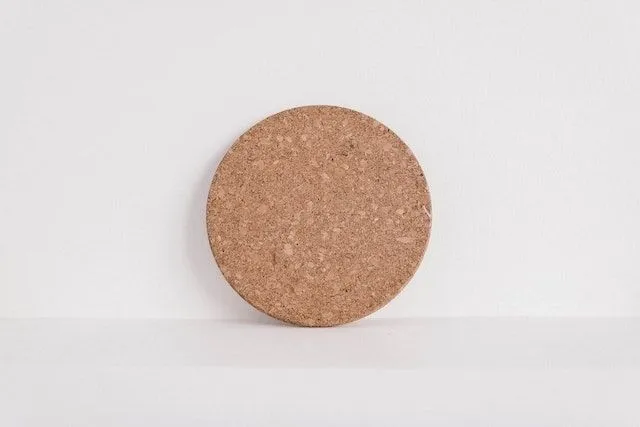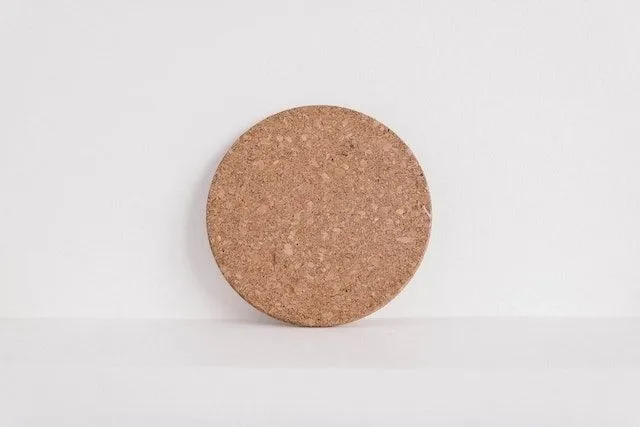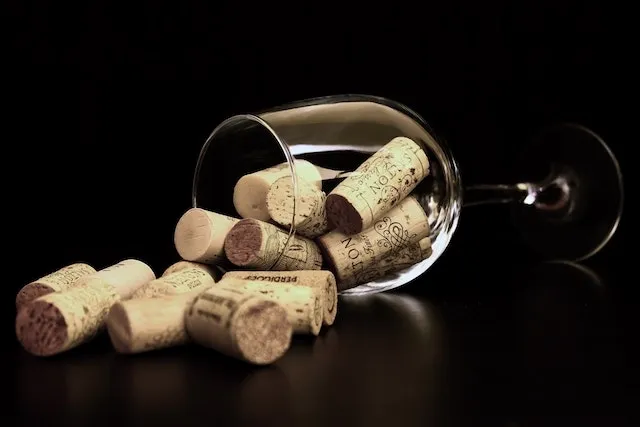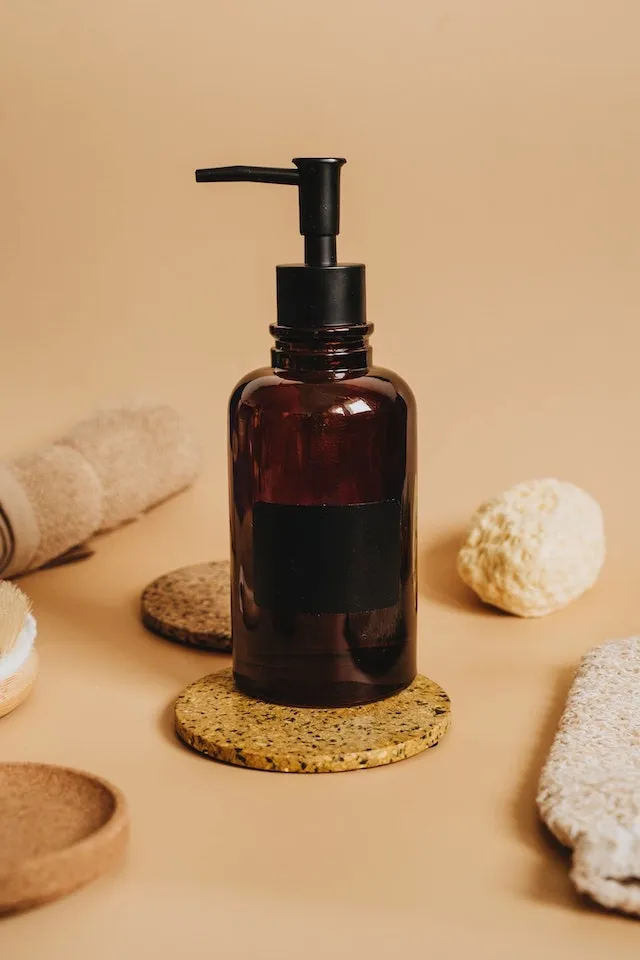How To Clean Cork Drink Coasters Correctly
Cork coasters are absorbent and quickly pick up dirt and stains. There are several ways to clean them depending on style and design so you have come to the right place if you are wondering how to clean cork coasters. In this article, we will look at the importance of cleaning cork coasters and a step-by-step cleaning guide. We will also include some common mistakes and tips on caring for and storing your cork coasters.

Key Takeaways
- Cork is a very sustainable material
- Cleaning cork is important but needs to be done correctly
- There are several methods for cleaning cork coasters - you need to choose the best for you
- Incorrect washing can lead to problems with mildew and other issues
- There are some great alternatives to cork for coasters like ceramic and PVC
Table of contents
What Is Cork And Why Is Cleaning It Important?
Cork is a brilliant and versatile material for coasters and placemats. It grows very quickly so it is a highly sustainable crop, but it is your job to preserve its maximum lifespan. Cork is sourced from the outer layer of bark from the cork oak, and it is very lightweight and porous. You must take care of it to keep it suitable for use in your home.
Cork has some key characteristics that relate to its maintenance:
- It absorbs water and takes a long time to dry, so it is best to use minimal water when washing it.
- It can be washed with light soap but you must be gentle with it and rinse thoroughly.
- If you do have to use a lot of water, be sure to dry the cork thoroughly or mould can develop.
If a drink spills onto a cork coaster, that liquid can cause it to become mouldy if you don’t clean and dry it. Long-term saturation can also harm the integrity of the cork, causing it to break easily if you don’t dry it out.

How To Clean Cork Coasters: Step-By-Step Guide
It is crucial to clean cork coasters with great care to fully remove the dirt and avoid doing more damage to the material. Follow the steps listed below to carefully remove dirt or debris whilst preserving the integrity of the cork.
Is Cork Hard To Clean?
Cork is not necessarily difficult to clean in comparison to other materials. It just requires you to take the right steps to clean it thoroughly and avoid damaging the material. Here are a few general tips to help make the process easier:
- Avoid over-saturating with water - use only a damp cloth where possible
- Use mild soap, stain remover or white vinegar for cleaning stains
- Always allow it to air dry fully before using the coaster again
This is how to clean cork coasters so that they are returned to their best without being damaged. If you feel your coasters are beyond being restored, please feel free to browse our range of coasters to find some suitable replacements.
Preparation
Before you begin cleaning, make sure you have everything you need to hand for the job. If there are stains, you will need your chosen stain removal liquid and a cloth for spot cleaning. You will also need warm water and a cloth for scrubbing. And you should prepare a place to let the cork air dry.
If your cork coaster is not engraved, you might also want some smooth sandpaper to begin the process. A quick once over with this is a great way to start the cleaning process and could have your coaster looking as good as new.
So here is your list:
- Smooth sandpaper
- Cleaning solution
- Cloths
- Warm water
- Soap
- Space for drying
Detailed, Step-By-Step Instructions On How To Clean Cork Coasters
Know that some people will simply put their cork coaster in the dishwasher or wash by hand with the dishes. This can work, but you run the risk of damaging the coaster or over-saturating it with water.
We recommend the following steps for a safer clean.
- Step 1: If your cork coaster is not engraved, your first step should be to go over it with the smooth sandpaper. This will lift any dirt and debris that is sitting on the surface of the cork. Some people like to also vacuum the cork with a soft brush attachment at this stage.
- Step 2: If there are any stains on your coaster, this is the time to spot clean them. This can be done with a mild stain remover, white vinegar or dish soap. Once done, wipe down with a damp cloth.
- Step 3: Mix the mild soap into the warm water and use a cloth to gently scrub the surfaces of the coaster. This should lift any remaining dirt and stains from the material.
- Step 4: Rinse the coaster under the tap to remove the soap residue and the lifted dirt. The material will absorb water during this process.
- Step 5: Air dry the coaster by placing it upright with good circulation all around. It is important to allow it to dry fully before using it again so that the cork is not weakened and no mould can develop.

Tips For Effective Cleaning
The top tip for effective cleaning of cork coasters is to avoid rushing or cutting corners. Every step should be carried out as thoroughly as possible with attention to detail. This means:
- Sanding all over the surface and using the soft brush head on your vacuum cleaner to remove debris
- Taking your time when spot cleaning stains and using a good soap or stain remover
- Scrubbing comprehensively but with care so as to remove dirt without damaging the cork
- Rinsing thoroughly but avoiding submerging the cork in water to avoid oversaturation
- Allowing ample time for the cork to air dry fully
As noted, it is not necessarily difficult to clean cork coasters. Follow the steps carefully and you should have no problems. If any of the stages don’t work, or you start to notice degradation of the material, it may be time to buy some new coasters. Incidentally, if you buy custom cork coasters in bulk from our store, you can replace dirty ones with a new clean one to give yourself extra time to carry out the cleaning process.
Want to enjoy the benefits of cork in your coasters?
Cork is a sustainable coaster material that offers diverse customization options. Our custom cork coasters can be personalized in many ways and are easy to keep clean.
The Best Way To Clean Cork Coasters
In discussing how to clean cork coasters, the best methods are the ones described in the previous section. However, the best approach depends on the coasters in question, as they can have different types of designs. Let’s take a look at the pros and cons of the steps listed above.
- Sanding with soft sandpaper: This is very effective for coasters with no engraving. It scrapes off dirt and debris and you can double down with the help of a vacuum cleaner. However, if your sandpaper is too coarse you might damage the cork. And this is not suitable for engraved coasters.
- Spot cleaning: This is helpful for stains and stubborn dirt. But it’s important to never use harsh chemicals that might damage the material. Avoid stain removers except for the most mild ones. White vinegar is a great option for breaking down dirt, but it can leave a telltale odour. Soap can also be effective, though it may not work as well as the two alternatives.
- Hand washing: A combination of soap, warm water and a cloth is a simple approach. Scrub too hard or use too much soap and you may damage the cork. However, if you don’t scrub hard enough or use enough soap, you may struggle to tackle the dirt. The key is to find the right balance and keep saturation of the cork to a minimum. You can order custom cork coasters from us with a protective coating to make cleaning a breeze.
- Air drying: An important step, this is preferable to exposing the coaster to heat for drying it. Heat can damage or warp the material. But air drying requires patience and you must ensure the coaster is upright so that no part of it becomes oversaturated. And good air flow is essential.
Common Mistakes To Avoid When Cleaning Cork Coasters
It’s important to know how to clean cork coasters correctly to avoid them becoming damaged or degraded. But there are a few common mistakes people make that need to be avoided. Here are some things to be mindful of:
- Don’t use too much water: If the coasters are very dirty, it can be tempting to use a lot of water. But this can weaken the material and cause oversaturation that increases the risk of mould. Try to use the smallest amount of water possible when cleaning.
- Avoid harsh chemicals: Cork is not the most resilient material. If you use stain removers or cleaning chemicals that are too strong, they can damage the cork or leave stains that will never wash out.
- Always allow cork coasters to dry thoroughly: If you bring your coasters back into use before they dry fully, any lingering water in the cork can lead to the development of mould.
Can Cork Be Washed? Understanding Cork And Water Interaction
Cork is a porous material so it absorbs water easily. Once the water is inside the cork, the material can swell and trap water in. This means it takes a long time for the cork to dry out. The more water that it absorbs, the longer it will take to dry, so we always recommend minimising exposure to water.
When the fibres inside the cork are saturated with water, they soften. This means the material becomes more prone to breaking or warping. Moreover, lingering water inside the cork can lead to mould growth, as the fungus thrives in dark, moist environments. This is why we say to use minimal water when cleaning cork coasters.
- Start with the soft, dry sandpaper
- Next, move on to spot cleaning
- The next level is a damp cloth
- Only then do you move on to using more water if needed
- Finally, always air dry the coasters fully before using them again

Add a sophisticated design to your custom cork coasters
With our custom monogrammed cork coasters, you get an elegant tabletop accessory with your own sophisticated design, crafted to the highest standard with minimal maintenance needs.
Start designingPreventing Common Cork Problems: Mold And Staining
As described in the previous section, cork gets mouldy because it absorbs water that takes a long time to dry. If that water lingers too long, it creates the perfect environment for the fungus mould to thrive. So the key is to keep your coaster as dry as possible and always allow it to air dry fully if it gets wet.
Another common problem is staining. This occurs when something spills on the material and is absorbed into it. The quickest solution is to always wipe the cork clean as soon as something spills on it. Failing that, spot cleaning with sandpaper or a gentle stain removal solution is your next option. Always rinse the stain remover thoroughly and allow to fully air dry.
How To Store Cork Coasters?
When you are not using your cork coasters, don’t keep them out where they are at risk of getting wet or damaged. Instead, store them in a cool, dry place like inside a cupboard. You can pile them up or, even better, store them in a rack that allows air flow between the coasters.
Good air flow is helpful because it helps ensure the coasters are dry. If any water is trapped inside them without your knowledge, this will enable them to dry off in storage so they are ready to be used again when you need them.
Want maximum personalization on your bespoke cork coasters?
With our custom cork photo coasters, you can add a cherished photograph of a loved one or a beloved pet for nostalgia and enjoy easy cleaning and maintenance.
Alternatives To Cork Coasters
Cork is a very sustainable material as it is natural and grows in abundance. When a cork product reaches the end of its lifespan, it is biodegradable, so it won’t harm the environment. Moreover, despite its vulnerability to water, it is good for coasters as it is soft, lightweight and fairly easy to clean.
However, there are many other materials out there. Take a look at our range and discover great materials like:
- Paper: Cheap, lightweight and easy to customise but not very durable
- Vinyl: Waterproof and durable but not always the most aesthetically pleasing
- Ceramic: Elegant and waterproof but vulnerable to breakage
- PVC: Durable, stylish and customisable but not the most sustainable
We sell bulk orders of coasters in all these materials and many more, so you can simply replace a coaster when it becomes dirty. You can add custom designs and personalise them in many ways to make them your own. Simply choose your preferred coaster option and place your order for affordable, bespoke coasters in different quantities.
Frequently Asked Questions About Cleaning Cork Coasters
How To Clean Cork Coasters?
You can clean cork coasters using soft sandpaper, mild stain remover, soap, water and a cloth. Keep water exposure to a minimum and always allow to fully air dry.
Can Cork Be Washed?
Yes, but it is wise to keep water exposure to a minimum to avoid oversaturating the cork and increasing the risk of breakage or mould.
Do Cork Coasters Get Moldy?
They can get mouldy if they get wet and are not allowed to dry fully.